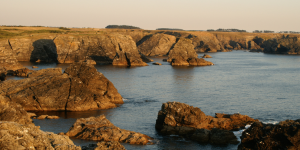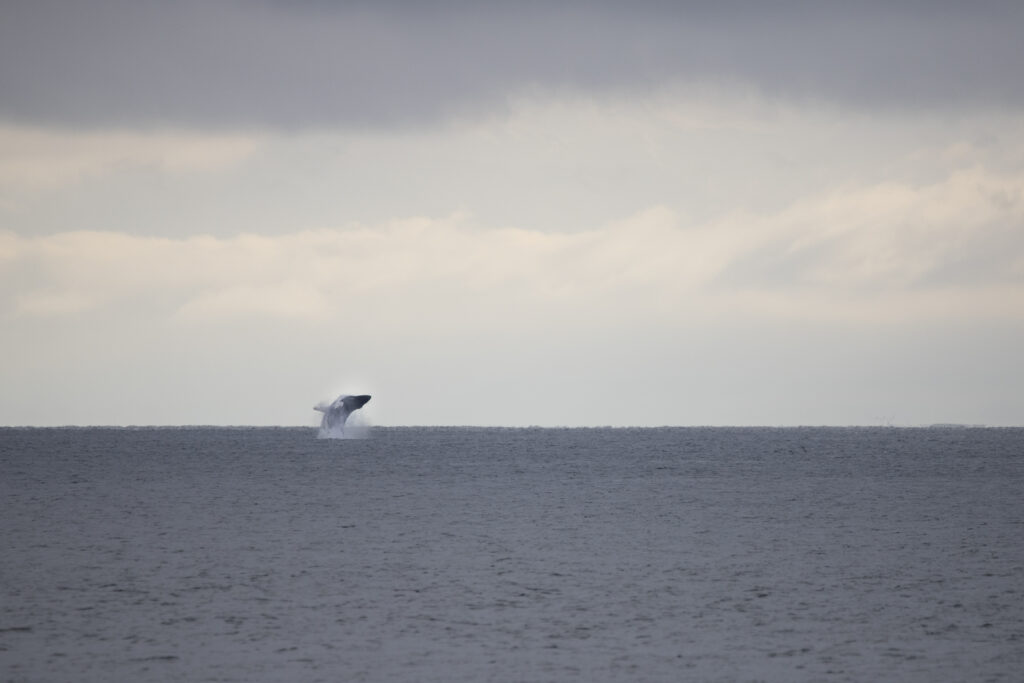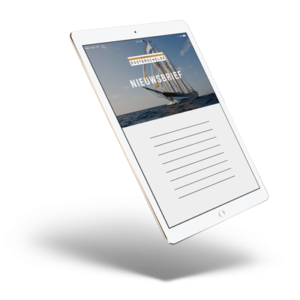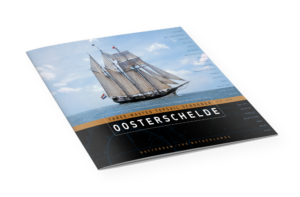19 Feb Whales
19 February 2024
Whales
We are sailing on the Pacific Ocean off the mountainous coast of Chile. The wind is south, around force 6-7, so steering is a strenuous job.
But first back where I stopped last time. After Puerto Eden, we had to sail another 90 miles through the fjords after which came a stretch of open ocean. And that was not easy! Ocean swells of 3.5 meters high and a strong northerly wind caused a lot of discomfort and seasickness. We had brief radio contact with a small passenger ship in the middle of the night two days earlier. I discussed our plan to go back in the fjords via the Golfo Corcovado, and since the pilots had described that being a choppy entrance, I asked what his idea about it was. The answer was clear, we were much better off taking Canal Darwin, 100 miles south. Because of the name alone, that choice was almost predestined, and it turned out to be a very good one too. With very calm weather and beautiful low-hanging clouds, it was almost mysterious to get back into the fjords there. Less than two hours later, it was windless, and the sun was shining. For the first time in weeks, the thick coats and hats could suddenly be taken off and the big hatch of the entrance could be opened again. A small rock island filled with sea lions, Magellanic penguins and cormorants completed the picture. Again, beautiful drone footage of this can be found on our Instagram account.
Even more beautiful was the next morning when we approached the Golfo Corcovado from the south. Eduardo had heard through friends that whales were frequently seen here. And indeed, some blows were spotted here and there in the distance but every time we sailed in that direction they disappeared again. Until, during breakfast, a whale came completely out of the water about a mile ahead. Once there, we turned out to be in the middle of a pod of whales. Blows and tail flukes on all sides. At first, the biologists on board totally disagreed on whether they were humpbacks or blue whales. Luckily, we can still trust all our biologists, because it turned out to be a group of at least 6 humpbacks and 3 blue whales. Really very special to see them on all sides around us.
After this fantastic feast, which lasted as long as two hours, it was a good 120 miles of sailing between Isla Chiloe and the mainland until we sailed into the open sea again at Canal Chacao. In this narrow passage, the tidal current can reach 10 knots. The pilot expressly warns of serious waves and variable water currents. Fortunately, the traffic officer spoke nice English and was able to confirm our tidal calculation. At six o’clock in the morning, 2 knots of current were running out, which we took eager advantage of.
Once out on the open ocean, it was dead calm with a high swell. So, we anchored just a few more hours on the north side of Chiloe Island until the promised south wind picked up.







